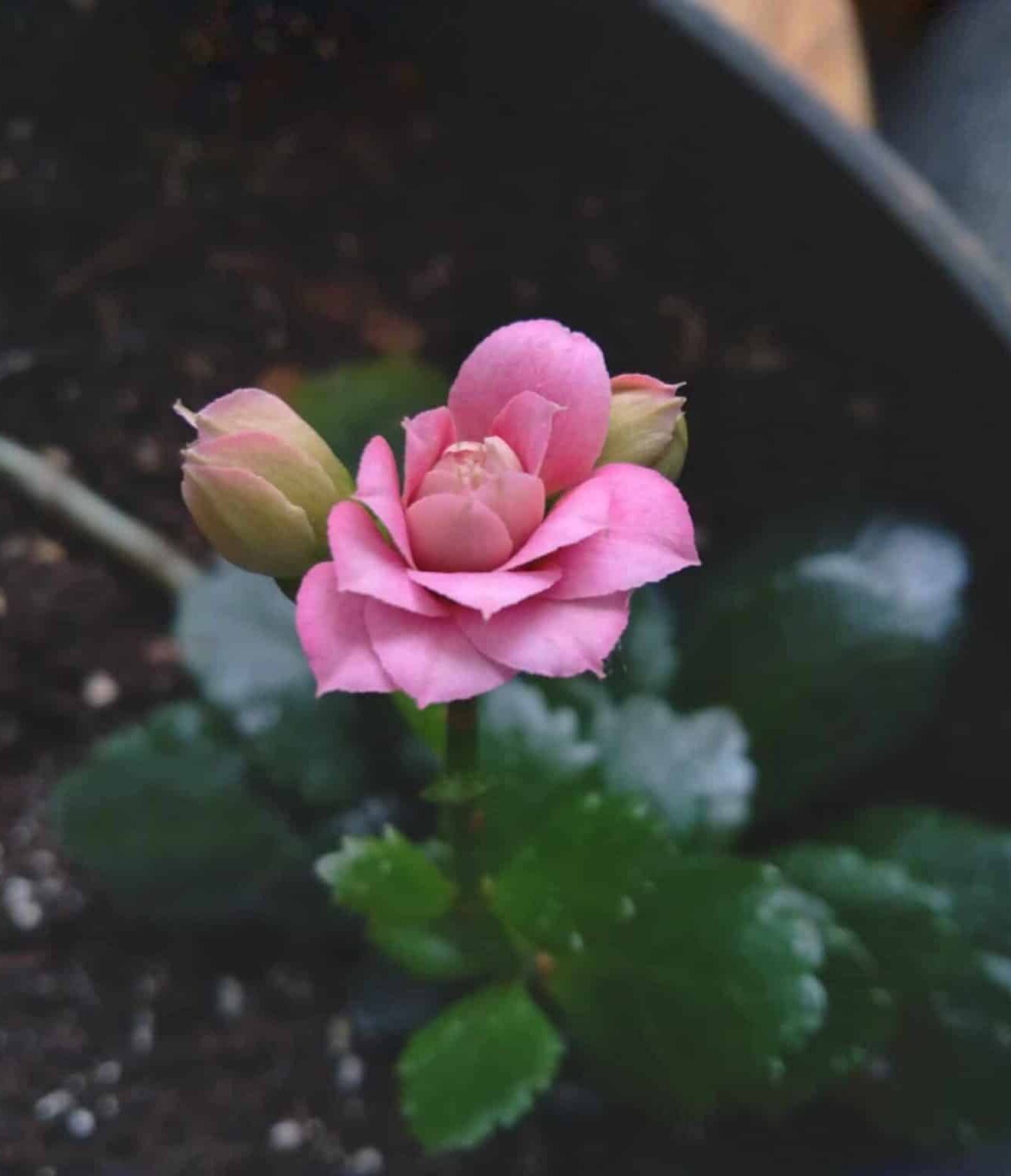Although the Kalanchoe naturally gives out the clustered vibrant four-petaled bloom once a season, you can still make it to rebloom during dormancy.
Table of Contents Show
How Many Times Does Kalanchoe Bloom?
Kalanchoe plants can produce flowers all year round if the growing conditions are similar to the tropical African native region.
This is because Kalanchoe plants are photoperiodic and bloom in response to the light they receive throughout the day.
So to make the Kalanchoe give blooms almost all year round, expose it to natural stressors.
Some plant lovers have reported that they can rebloom their Kalanchoe nearly three to four times a year using the stressors.
How Long Does Kalanchoe Bloom Last?
Kalanchoe is one of the longest-blooming flowering plants giving clusters of four-petaled flowers.
However, the flowers of Kalanchoe droop and wilt after completing the first cycle. So you must cut back the dead bloom to give way to new bloom.
How to Get Kalanchoe to Bloom For The First Time?
Kalanchoe flowering indoors is not as rare as other houseplants, but it is tricky.

Kalanchoe plants are highly particular, requiring patience and a perfect blend of the external environment to bud.
So follow the care steps to make your Kalanchoe bloom for the first time in the blooming season.
- Provide the ideal temperature between 60 and 85ºF.
- Place the Kalanchoe outdoors in a warm, humid climate, but move them indoors once the draft hits.
- Overwatering kills Kalanchoe. Henceforth, water it once or twice a week, depending on the plant size, and make sure the topsoil is dry before watering.
- Fertilize the plant monthly with a 20-20-20 NPK ratio fertilizer during the growing seasons.
- Usually, you can try repotting Kalanchoe once yearly when blooming stops, but repot them before flowering if bought recently.
- It is essential to prune your Kalanchoe after each blooming period to encourage new and refreshed growth.
- Use neem oil or insecticidal soap to eliminate bugs like Aphids, mealybugs, and scales, which feed on the plant sap and affect the bloom.
- Kalanchoe plants can grow both outdoors and indoors. However, they only grow in pots and not on the ground.
Fall and spring seasons are the best time of the year for you to induce blooms in your Kalanchoe.
- If you feel your Kalanchoe is dying or ill, propagate the leaves or stem cuttings.
7 Popular Ways to Get Kalanchoe to Rebloom
Naturally occurring exotic blooms of Kalanchoe can never satisfy a gardener’s need, as you might want to see it happy all year round.
So learn the ways to induce your Kalanchoe to rebloom once again quickly.
1. De-head the Spent Flowers
To make the evergreen perennial Kalanchoe flower all year round, de-heading is the key.
So to shift the focus of Kalanchoe on producing new blooms, better to deadhead the spent and wilted flowers.
However, remember to use clean, sterilized scissors or pruners to prevent further infection.
2. Stimulate a Dormant Period
The dormant period is essential for your Kalanchoe to gather energy and be ready to bloom again.
- Step 1: Keep your plant in a closet or a dark space for at least thirteen to fourteen hours.
- Step 2: Provide the plants with about ten hours of bright light. Position them preferably somewhere outdoors or by a window. The key is to keep it slightly warm and away from cold air.
- Step 3: Do not water or feed your Kalanchoe plant until you see buds appearing.
You will notice a few buds on your plant after the sixth week.
- Step 4: Move the plant to a brighter location than the current one.
- Step 5: Resume watering the plant.
3. Low Temperature Is a Must
Keep your Kalanchoe in a cold and bright room for six weeks, with temperatures around 50-65ºF.
The colder room, the better!
4. Check the Light Requirements
Make sure it receives 10 hours of bright light every day. Then, move it to a completely dark room for 14 hours daily.
Make sure not to disturb this bright and dim light setting.
5. Water Requirements
Strictly avoid watering your Kalanchoe if you want them to bloom.
Water them only after the third week, and drain the drainage plate.
6. Do Not Fertilize
Do not use any fertilizers on your Kalanchoe during this period.
When plants enter dormancy, they do not require any fertilizer, as fertilization will do more harm than good in such circumstances.
7. Let Your Kalanchoe Rest Completely
Check for budding after the sixth week. If you find that your Kalanchoe is budding, place it in a sunny location as usual.
Now go ahead and give it some water and plant vitamins.
And if you don’t, there might have been a mistake in the process.
What To Do After Kalanchoe Stops Blooming
For starters, remove the dead flowers, prune all the dead or dying leaves, and give them a tiny boost of all-purpose fertilizers.
Next, if you want your Kalanchoe to start blooming again, you might want to stimulate the dormant period, as mentioned earlier.
However, gardeners inform you that it is good to give your plant a break for a month before subjecting them to another cycle of stress.
From Editorial Team
Conclusion!
Kalanchoe allows you to enjoy the most robust blooms in the winter as they are low-light lovers.
Meanwhile, you can now trick your Kalanchoe into giving out the buds even in the off-season by mimicking the environment of shorter days and longer nights indoors.


